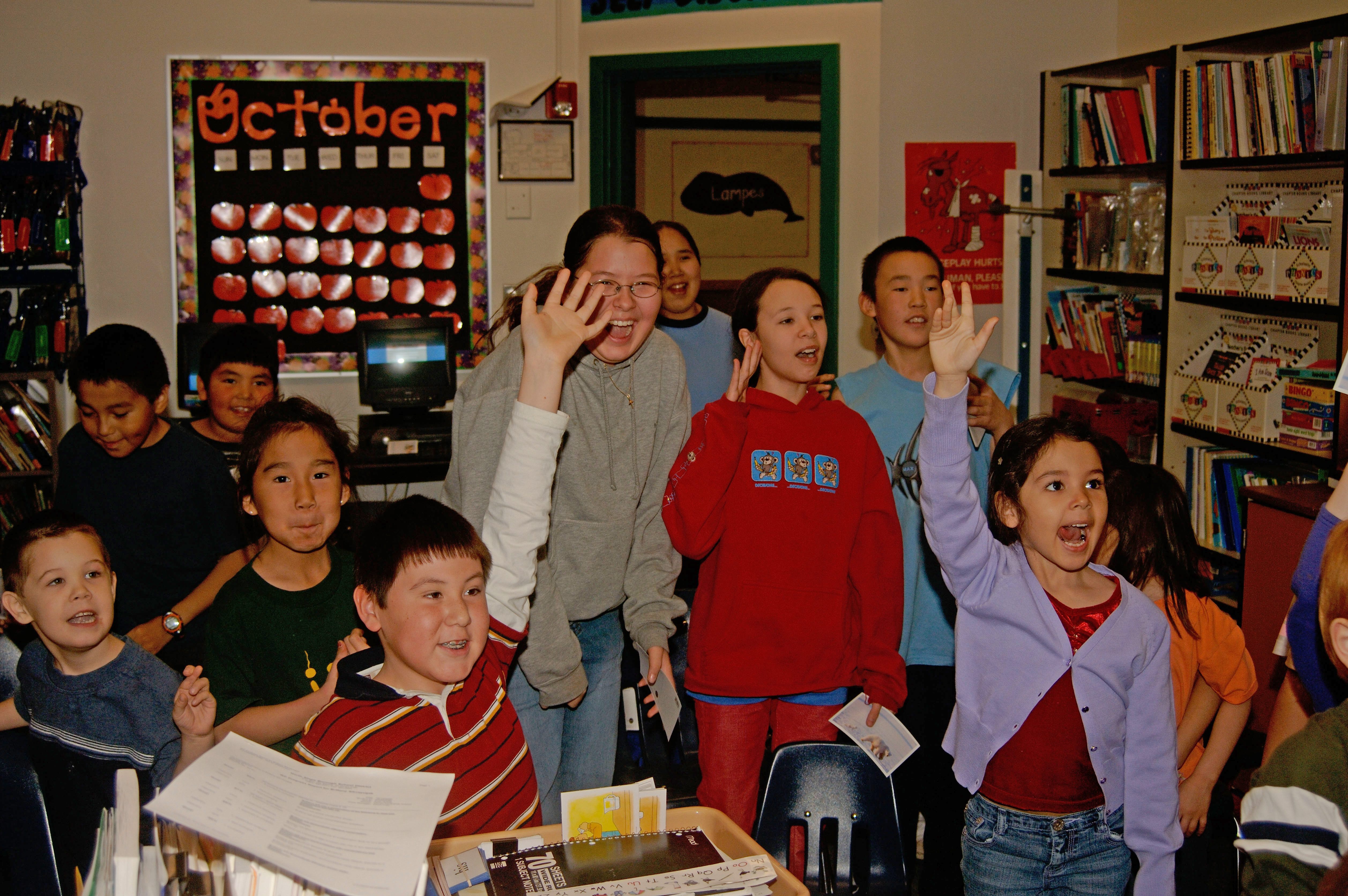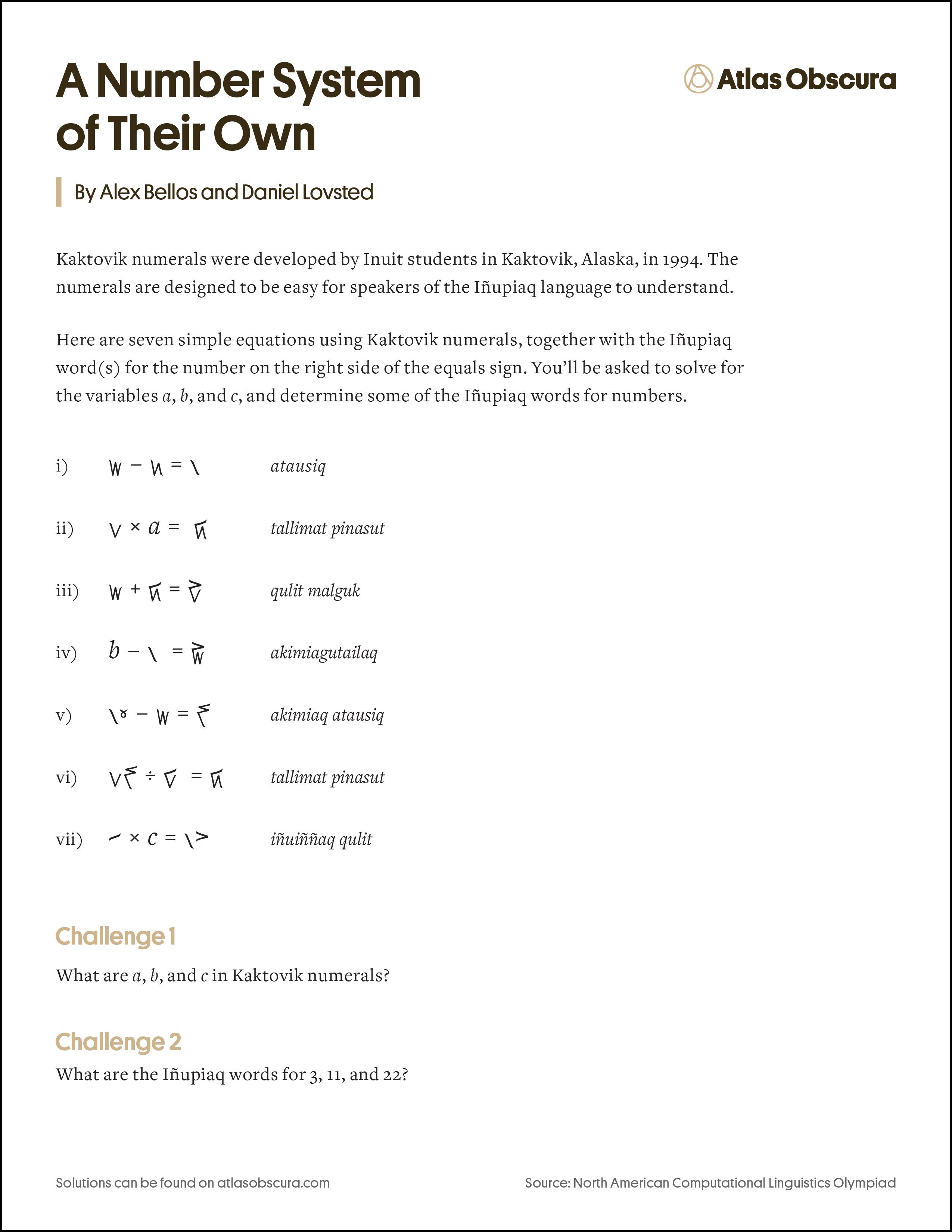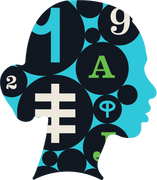
Puzzle Monday: A Number System of Their Own
Editor’s Note, November 2024: Thanks for checking out our puzzle archive! While the online version of this puzzle is no longer interactive, we suggest downloading the PDF, available below. You can find other archived puzzle PDFs available for download here.
Among our crosswords and other puzzles, we feature linguistic challenges from around the world from puzzle aficionado and writer Alex Bellos. A PDF of the puzzle, as well as the solution, can be downloaded below.
Kaktovik is one of the most northerly settlements in the United States, a village of about 300 on the rugged, freezing north coast of Alaska. It is also the birthplace of a new way of writing numbers: Kaktovik numerals, which were developed in the 1990s, taught in Alaskan schools, and are now widely available in a way they have never been before.
The digits 1, 2, 3, and so on are known as Arabic numerals, and have been the standard way of writing numbers in most of the world for centuries. Yet in 1994, students at Harold Kaveolook School in Kaktovik came up with a different system more suited to the local Inuit language, Iñupiaq, which counts a little differently. According to the teacher who oversaw the project, William Clark Bartley, his students improved their math scores from below to above the national average after a year using their new system.

Kaktovik numerals, which are the subject of the puzzle below, gained prominence beyond the school among the Iñupiaq people, who number around 21,000 and live in the area of north Alaska that spans roughly from the Bering Strait to the United States/Canada border.
Nuluqutaaq Maggie Pollock was a kindergarten teacher in Utqiagvik, the capital of North Slope, the borough that contains Kaktovik, in the 1990s. She taught the system to her class. “At that time Kaktovik numerals had just been developed. As an Iñupiaq I felt that I should teach the numerals because they mean a lot to our native culture,” she says. “It meant a lot to my students because Kaktovik numerals are easier to understand. The children hear Iñupiaq at home and they can relate to the numbers.” (You’ll see why when you solve the puzzle below.)
Yet Pollock remembers that the school district was worried that if children learned Kaktovik numerals they would fall behind with Arabic numerals, and the new system never gained wide usage.

Since September 2022, however, Kaktovik numerals have been supported by Unicode, which means that it is now possible to write them on computers, once one installs the right font. The drive to have the numerals in Unicode was part of the Script Encoding Initiative, run by the department of linguistics at the University of California, Berkeley, which aims to include minority scripts in the digital world.
The Unicode support means that for the first time Iñupiaq people are able to use their numerals on computers, tablets, and phones, and is a crucial step if this innovation is to have any future.

Stumped? Download the solution, with all the logical steps to get there!










Follow us on Twitter to get the latest on the world's hidden wonders.
Like us on Facebook to get the latest on the world's hidden wonders.
Follow us on Twitter Like us on Facebook